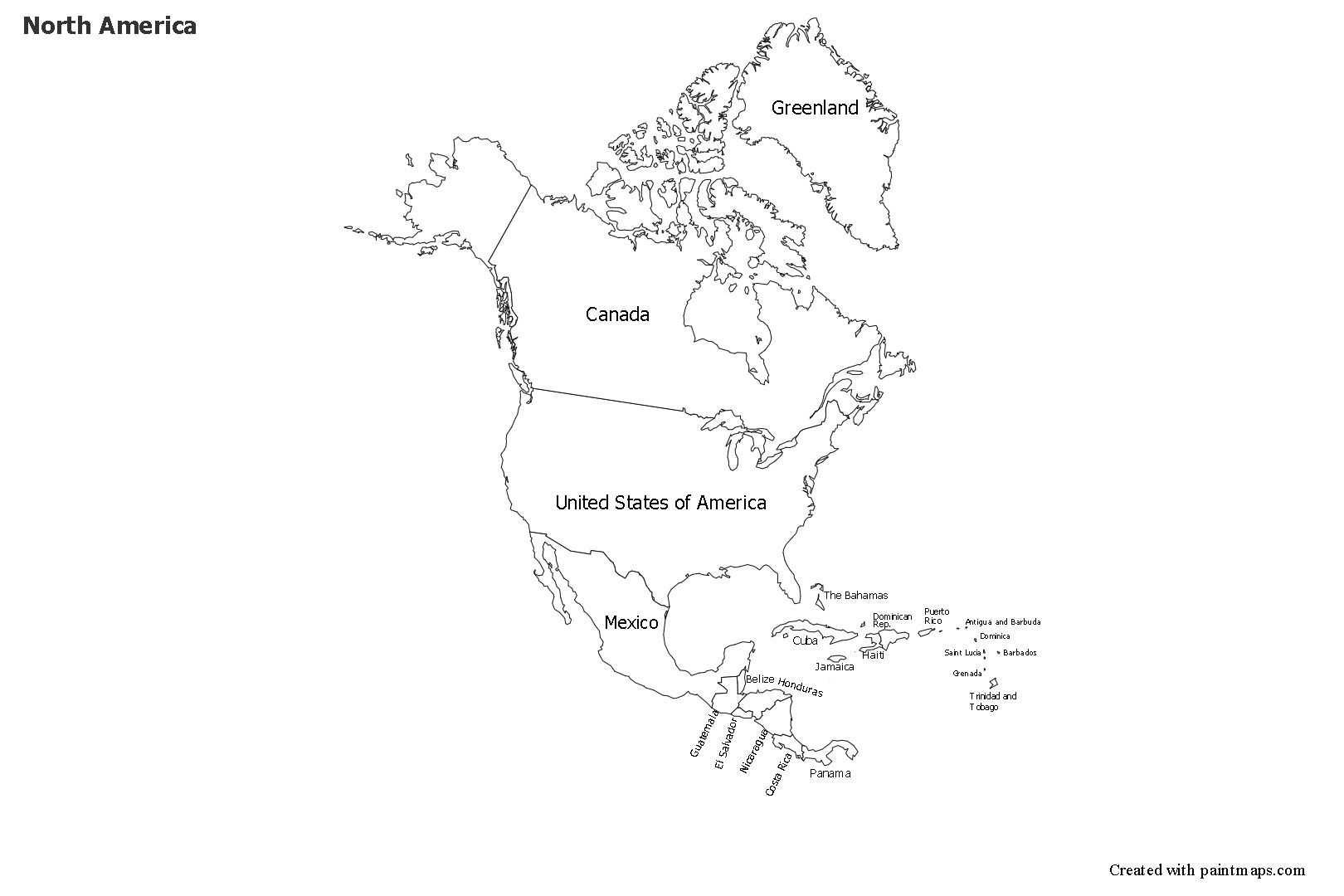In an era marked by rapid technological advancements and the ceaseless barrage of information, the allure of black and white representations of North America captivates a diverse audience. These monochromatic renditions distill the continent’s complexities into a stark yet poignant format, evoking a spectrum of interpretations and emotional responses. The fascination with black and white depictions often stems from their ability to highlight nuances that color can obscure, shedding light on geographical, cultural, and social narratives embedded within the landscape.
At a cursory glance, black and white maps may seem deceptively simple. They strip away the vibrancy typically associated with topographical representations, yet this reductionism invites contemplation. Why are these representations so compelling? Perhaps it lies in their ability to evoke nostalgia. The aesthetic recalls an era when photography and cartography were explored primarily through shades of grey, conjuring images of explorers and cartographers painstakingly charting their discoveries. This historical resonance transcends mere visuals, connecting viewers to the imaginative pursuit of knowledge and discovery that characterized earlier centuries.
Moreover, the absence of color may serve as a canvas for the imagination. In a black and white map, interpretations are not dictated by chromatic cues; viewers are free to impose their subjective experiences and emotions onto the depiction. The stark contrasts exemplify features of the land—mountains, rivers, urban centers—providing a clear, unembellished view of the geographic features that define North America. This transparency can engender a deeper understanding of the continent’s physicality, inviting inquiry into ecological conditions, migration patterns, and urbanization trends.
Black and white imagery often evokes strong emotional reactions. This can be attributed to the innate human affinity for contrast, a quality that activates our cognitive schemas. For instance, one might observe a generational divide in the perception of these maps; older generations frequently find them reminiscent of historical narratives, while younger audiences perceive them through the lens of modern graphic design and aesthetics. The blend of nostalgia and novelty encapsulates North America’s multifaceted cultural identity, bridging gaps between past and present.
Additionally, the fascination with black and white imagery can be ascribed to the intellectual engagement it provokes. In a society often inundated with vivid colors and digital distractions, these simplified depictions compel individuals to pause and reflect. They also serve pedagogical purposes: educators utilize monochromatic maps in teaching geographical literacy, emphasizing critical thinking skills with regards to spatial orientation and cultural geography. The stark contrasts facilitate discussions on urban development, environmental issues, and historical migrations without the interference of color-related bias.
In educational frameworks, black and white maps effectively elucidate socio-political contexts, delineating boundaries and delineating territories in a manner that prompts curiosity about historical grievances and regional discrepancies. Consider the way borders have shaped the psyche of North Americans; disputes over territory and resources have continually manifested in both historical narratives and contemporary policy discussions. Black and white maps, in their essential purity, invite scrutiny of such issues, resisting simplification while simultaneously prompting questions about ownership, stewardship, and legacy.
The implications of using black and white representations extend beyond aesthetic considerations. In environmental studies, for example, the stark nature of these visuals is particularly useful in pinpointing ecological disruptions. The climate crisis has compelled scholars and activists alike to seek methodologies that communicate the urgency of environmental data. Black and white maps can highlight areas of ecological concern, such as deforestation, urban sprawl, and climate change’s impact, fostering awareness among communities. This approach aligns with the larger goal of advocating for sustainable practices and conservation efforts, demonstrating that even in their simplicity, black and white representations can carry profound weight in advocating for environmental change.
Furthermore, in the artistic domain, black and white maps resonate with contemporary movements in design and sustainability. As environmental consciousness becomes increasingly intertwined with aesthetic choices, artists and designers embrace minimalism. This appreciation for simplicity often manifests in the creation of black and white map art, which marries geographic representation with creative expression. As these artworks proliferate in galleries and homes alike, they serve as reminders of our interdependence with the environment, urging viewers to consider our impact on the planet.
In conclusion, the allure of black and white representations of North America lies in their multifaceted nature. They evoke nostalgia and intellectual curiosity, encourage personal interpretation, and advance critical discussions surrounding socio-political and environmental issues. Their enduring appeal does not diminish with time; instead, it amplifies as society grapples with the complexities of identity, geography, and climate. In navigating the landscape of North America through monochromatic lenses, viewers are challenged to engage, reflect, and ultimately, act—advocating for a more sustainable relationship with the natural world that surrounds them.
